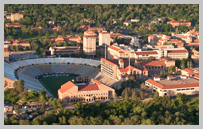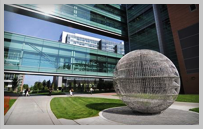Category
Technology
Submitted By
Greg Williams, gwillia5@uccs.edu, Deputy CIO, OIT
Project Team
Greg Williams, gwillia5@uccs.edu, Deputy CIO, OIT
Eric Schneider, eschneid@uccs.edu, IT Systems Program Manager
Xiang Tan, xtan@uccs.edu, IT Program Manager
Isaac Poole, ipoole@uccs.edu, Systems Administrator
Project Description
Over the course of the past 3 years, OIT has worked to consolidate and re-engineer, all major computing environments into 1 supportable solution. These computing environments included, College of Engineering and Applied Science, Office of Information Technology, 2 grants that funded the UCCS cyber range and the UCCS Open Research Computing Architecture. This not only saves the university money through a common platform, but it also is now more supportable since the architecture can be supported by many teams not just one team for one environment. The other benefits include over 50% energy savings compared to older architecture, and several million dollars of licensing and hardware costs by re-engineering instead of just pure replacement.
Project Efficiency
The greatest efficiency is supportability. Instead of 4 different types of systems and architectures, we now have 1 similar base system. This means several teams of people can understand how to support the "similar" environments instead of dedicated people supporting disparate systems.
Project Inspiration
When central OIT took over engineering support for the college of engineering and applied science, we worked hard to find a way to come up with a design that would be within budget and have the computing capacity needed for the department. This move allowed us to re-architect everything at once including OIT. Instead of spending nearly $3.2million for a one to one replacement of just one architecture, we instead spent less than $1million through hard engineering work knowing that the work we did would be replicated for OIT.
What Makes You Happiest about this Project?
I am excited that it was a team effort in coming up with creative solutions that would work for the entirety of campus and not just one department or college. We are able to now support an environment that is similar for all of our computing architecture. The design of this environment also helped a successful NSF computing grant which will enable research computing for years to come.




